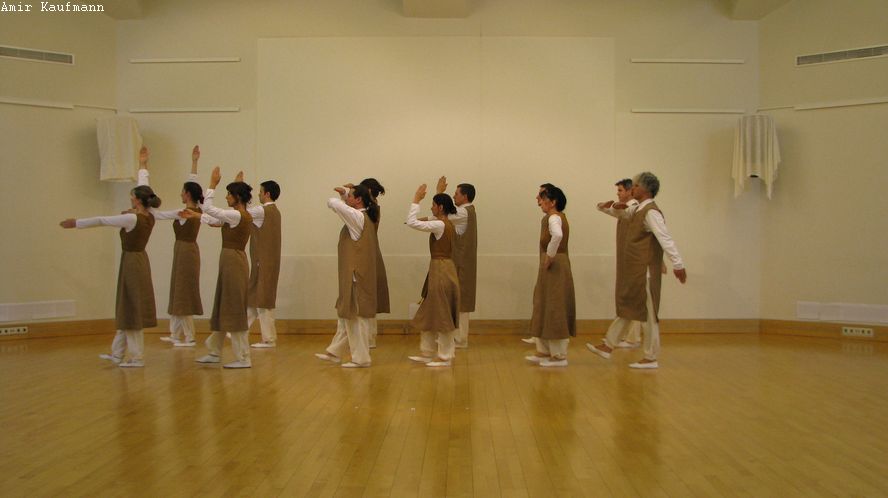The ’39 Series‘
The last decade of Gurdjieff’s life, the second stage of his Movements teaching, was one of extraordinary creativity. He demonstrated the new Movements, but rarely explained much about them. His presence was so strong -it literally filled the whole place- that one could absorb the new exercise in a direct way. No further explanation was needed. It was never allowed to make choreographic notes, because this activity would reduce one’s first and complete impression to an analytical or rational attitude.
Gurdjieff studied the results of each new Movement he gave by observing the state of the people in the class. Many of his new exercises did not reach the goal he had in mind. It is reported that sometimes he went away during the classes, to come back after a while to propose a small change in a Movement: for instance, a wrist that had been straight was now bent, an arm that was horizontal forward was now diagonally forward. Occasionally, even these new changes did not bring about the desired state in the dancers, and he then gave a strict order: „No… stop and forget this one, don’t perform it again ever.“ However, if a Movement did create the desired state in the psyche and bodily expressions of the performers he’d say, „That’s it, this one is set and ready now. What number are we?“ referring to the numbers they gave to the new set of „successful“ Movements, representing the slowly growing list of what became the „39 Series.“
The 39 Series were thus the kernel of his new exercises, the ones he had accepted as finished and relevant. All his other attempts, many of which have been remembered and have been performed since by his students, did not have his full approval. However beautiful they are, their relevance remains open to discussion.
If we compare the ’39 Series‘ with Gurdjieff’s earlier Movements, we find the same components: strong dervish dances, beautiful and quiet women’s dances, powerful geometrically patterned Movements, as well as sacred prayer rituals. However, the ancient religious and ethnological components are markedly reduced while abstract gestures and positions, performed in mathematical displacements, now prevail. It is as if, during the fifteen-year interval since his first efforts, Gurdjieff had digested his earlier impressions and reflected upon them. When he continued his work on the Movements, they reappeared with an even more personal style, in which mathematical and geometrical crystallisations are now dominant.
The drama of the human condition, so poignantly captured in a number of the old Movements, seems to have given way to a more abstract construction, but one that gives immediate and plentiful opportunity for work on oneself and work for the class as a whole. The later Movements were even more difficult to perform than the earlier ones and demanded a huge effort from a class in terms of precision, quickness, discipline and sustaining attention.
The 39 Movements have been called Gurdjieff’s magnum opus; many have felt that they summarised his whole teaching to mankind.






